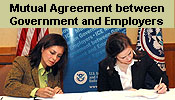The Cornerstone Report: Volume 4, Issue 2
ICE's Role in Securities and Investment Fraud
Seized home of main target, purchased utilizing funds from stock sales.
Home of StockGenie conspirator, purchased utilizing funds from stock sales. Purchase of home was identified through BSA analysis.
2002 Bentley Azure purchased utilizing funds from StockGenie stock sales.
2003 Aston Martin purchased utilizing funds from PNLK stock sales.
Securities and investment fraud is not a new occurrence but with the advent of the Internet, it has become easier to perpetrate. The schemes are still essentially the same, promising high-yield profits with little to no risk. Instead of just paper copies of graphs showing phenomenal growth, there are descriptive Web pages that appear to be authentic and genuine. Instead of an individual “cold calling” a potential victim, it is a computer that is targeting potential victims in emails and through Web sites for fraudulent corporations. In investigating financial crimes, ICE has encountered an increasing number of securities and investment fraud schemes.
As part of the continued Cornerstone outreach, the Special Agent in Charge (SAC) for Baltimore, Jim Dinkins spoke on March 12, 2007, to attendees at the Securities Industry and Financial Markets Association’s (SIFMA) Anti-Money Laundering Compliance Conference in New York, New York. SAC Dinkins advised the attendees to be vigilant against anything that sounds too good to be true.
Some of the schemes recently uncovered by ICE involve the embezzlement of funds intended for the purchase and trading of stocks, issuance of penny stocks and reverse mergers that were used in Operation Highroller.
Operation Highroller: Sale in Illicit Stock Generated $50 Million
In June 1997, the Special Agent in Charge Office (SAC) in Philadelphia, as part of the Atlantic City Casino Task Force (ACCTF), started investigating international money laundering through Atlantic City, New Jersey casinos and discovered an extensive, international stock fraud and money laundering conspiracy. The New Jersey State Police (NJSP), Division of Gaming Enforcement, Atlantic City, NJ, identified Philippe Hababou, a French citizen, as a possible target for the ACCTF, based on Bank Secrecy Act (BSA) filings on Hababou’s activities at Caesars and Trump Taj Mahal casinos in Atlantic City. Specifically, the numerous CTR filings revealed the movement of approximately $8.6 million.
Investigation revealed that Hababou was making large deposits into his casino accounts via wire transfer. Hababou then obtained gambling chips that he gave to Marc Rousso, the mastermind behind the elaborate scheme. Rousso used the chips, gambled a little and then returned the chips, including any winnings back to Hababou. Hababou then turned in the chips for cash, claiming them as winnings and withdrawing the remainder of his deposit in cash. It was later determined that Hababou was acting on behalf of Rousso and the wire transfers into the casinos were proceeds from the sale of penny stock controlled by Rousso in nominee brokerage accounts in Canada.
Scheme
The largest scheme involved the organization’s purchase and “reverse merger” of two corporations, Prevention Productions (a non-operating public shell company) and ProNetLink (PNLK). A reverse merger results in a privately held company becoming a publicly held company without applying the traditional route of filing a prospectus and undertaking an initial public offering (IPO). The privately held company takes on the “public” status through the merger of the two entities and new stock is issued to nominee stockholders who are acting on behalf of company insiders.
The investigation revealed an elaborate stock fraud orchestrated by Rousso and PNLK CEO Jean Pierre Collardeau involving the fraudulent issuance, transfer and sale of millions of shares of PNLK stock through foreign nominee owners and the promotion of PNLK stock through the Internet. Most of these shares were sold through Canadian brokerage firms in order to avoid SEC scrutiny. Proceeds from these sales were laundered through the casinos in Atlantic City and financial institutions in New York City, Canada, Netherlands Antilles and Switzerland.
Investigative Results
Co-conspirators shared in over $50 million in illegal profits from the sale of illicit stock. It is anticipated that total seizures in relation to this investigation will total over $13 million in cash, properties, vehicles, and other assets. ICE will return approximately $4.5 million to the 125 victims identified to date. As of now, 14 conspirators, including Rousso, Collardeau, two complicit stock brokers, an attorney specializing in SEC law, and an accountant have been convicted of various charges, including money laundering; securities, wire and mail fraud; CTR and tax related violations.
|
Red Flag Indicators
 Use of “reverse merger” loophole to issue stock. A reverse merger is a favorite of individuals that perpetrate stock scams because, although legal, it is a means to bring a private company public and to issue new shares without SEC scrutiny. Often, the new shares are issued to company insiders or their nominees. A reverse merger can often be a first step that leads to market manipulation by company insiders. Use of “reverse merger” loophole to issue stock. A reverse merger is a favorite of individuals that perpetrate stock scams because, although legal, it is a means to bring a private company public and to issue new shares without SEC scrutiny. Often, the new shares are issued to company insiders or their nominees. A reverse merger can often be a first step that leads to market manipulation by company insiders.
 Business account activity commingled with personal account activity. Business account activity commingled with personal account activity.
 Use of multiple accounts to conduct financial transactions inconsistent with normal activity for stated business. Use of multiple accounts to conduct financial transactions inconsistent with normal activity for stated business.
 Movement of funds, especially the international movement of funds, into and out of an account(s) through multiple wire transfers and/or checks (cash management accounts) with little if any securities transactions. Movement of funds, especially the international movement of funds, into and out of an account(s) through multiple wire transfers and/or checks (cash management accounts) with little if any securities transactions.
 Transfer of funds between seemingly unrelated accounts within a broker/dealer. Transfer of funds between seemingly unrelated accounts within a broker/dealer.
 Large amounts of cash placed on deposit in casino accounts and subsequently withdrawn with little or no play—a technique used by money launderers to obscure or disguise the true source of the funds by causing the casino to file a Currency Transaction Report, thus making the money appear as gambling winnings. Large amounts of cash placed on deposit in casino accounts and subsequently withdrawn with little or no play—a technique used by money launderers to obscure or disguise the true source of the funds by causing the casino to file a Currency Transaction Report, thus making the money appear as gambling winnings.
 Large cash payments used to purchase high-value items such as real estate, vehicles and other luxury items—a method in which illicit proceeds are laundered. Large cash payments used to purchase high-value items such as real estate, vehicles and other luxury items—a method in which illicit proceeds are laundered.
|
Don’t Be a Victim of Securities Fraud
Be wary of companies or individuals that promise high yield returns.
Research a company and/or individual thoroughly before sending any money.
Check on the disciplinary record of the financial professional that you are planning to invest with. The National Association of Securities Dealers (NASD) is the primary private-sector regulator of America’s securities industry and offers a search function on its Web site (www.nasd.com). Also check with your state’s securities regulator.
Be skeptical of any investment that is touted as a “sure thing” or one claiming little or no risk.
Don’t be afraid to ask questions. On its Web site, the Securities and Exchange Commission (SEC) (www.sec.gov) lists some of the basic questions an investor should ask before committing to any investment.
Back to Top |

![]()









 Use of “reverse merger” loophole to issue stock. A reverse merger is a favorite of individuals that perpetrate stock scams because, although legal, it is a means to bring a private company public and to issue new shares without SEC scrutiny. Often, the new shares are issued to company insiders or their nominees. A reverse merger can often be a first step that leads to market manipulation by company insiders.
Use of “reverse merger” loophole to issue stock. A reverse merger is a favorite of individuals that perpetrate stock scams because, although legal, it is a means to bring a private company public and to issue new shares without SEC scrutiny. Often, the new shares are issued to company insiders or their nominees. A reverse merger can often be a first step that leads to market manipulation by company insiders. 
